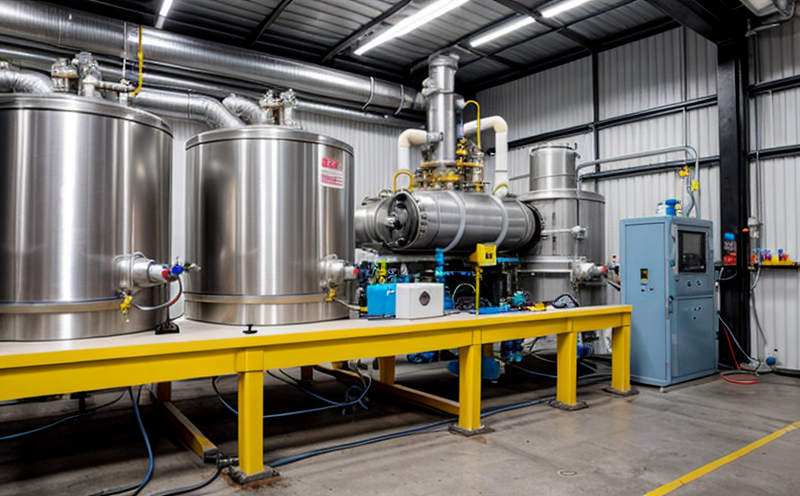ASTM E481 Neutron Flux Mapping in Nuclear Reactors
The ASTM E481 standard provides a comprehensive framework for neutron flux mapping within nuclear reactors. This service is essential for ensuring the safe and efficient operation of nuclear facilities by measuring and mapping neutron flux across various locations within the reactor core.
Neutron flux, or the number of neutrons passing through a unit area per second, plays a critical role in the performance and safety of nuclear power plants. By understanding and accurately mapping this parameter, facility operators can optimize reactor design, enhance fuel utilization, and improve overall safety measures.
The process involves placing neutron detectors at multiple points within the reactor to measure flux levels. These detectors are calibrated using known reference materials and compared against expected values derived from theoretical models and simulations. The results provide a detailed map of neutron distribution throughout the reactor core, which is invaluable for various applications such as fuel management, reactor power regulation, and safety assessments.
The ASTM E481 procedure ensures that these measurements adhere to internationally recognized standards, thereby enhancing reliability and consistency across different facilities. This service not only supports regulatory compliance but also contributes to advancements in nuclear engineering practices by providing precise data on neutron behavior within reactors.
Our team of experts employs advanced instrumentation and software tools to conduct ASTM E481 testing efficiently and accurately. We offer comprehensive reports detailing flux mapping results, complete with graphical representations that facilitate easier interpretation by facility staff.
The precision and accuracy of this service make it particularly useful for industries relying heavily on nuclear technology, including power generation companies, research institutions, and regulatory bodies responsible for overseeing nuclear operations.
By leveraging ASTM E481 neutron flux mapping in nuclear reactors, organizations can gain deeper insights into their reactor systems, leading to more informed decision-making processes. This service helps ensure optimal performance while maintaining high levels of safety and compliance with international standards.
In summary, ASTM E481 provides a robust methodology for conducting neutron flux mapping within nuclear reactors. It enables operators to make well-informed decisions regarding operational parameters, fuel management strategies, and safety protocols, ultimately contributing to the longevity and efficiency of these vital facilities.
Scope and Methodology
The ASTM E481 standard outlines a detailed procedure for neutron flux mapping in nuclear reactors. This includes the following key aspects:
Detailed calibration procedures using internationally recognized standards such as ISO 17025.
Placement of detectors at strategic points within the reactor core to capture accurate flux readings.
Data acquisition through advanced instrumentation capable of handling high neutron flux environments.
The methodology also emphasizes quality control measures, ensuring that all measurements meet specified tolerances and uncertainties. This ensures consistent results across multiple tests conducted in various reactors.
Our team adheres strictly to ASTM E481 guidelines when performing this service, guaranteeing that the data generated is reliable and compliant with industry best practices.
Industry Applications
Fuel management optimization in nuclear power plants.
Evaluation of reactor core performance under different operational conditions.
Safety assessments to identify potential areas requiring improvement or maintenance.
Development and validation of new fuel designs for enhanced efficiency and reduced waste generation.
Supporting research initiatives aimed at improving nuclear technology through better understanding of neutron behavior within reactors.
The precision provided by ASTM E481 testing allows stakeholders to make informed decisions that enhance both operational effectiveness and safety standards in the nuclear industry. Whether it's for routine maintenance or cutting-edge R&D projects, this service offers valuable insights into reactor dynamics.
Competitive Advantage and Market Impact
The ability to accurately measure neutron flux using ASTM E481 offers several competitive advantages:
Enhanced operational efficiency by optimizing fuel utilization and reducing waste.
Improved safety through better monitoring of reactor conditions, which can help prevent accidents or malfunctions.
Achievement of regulatory compliance, ensuring adherence to strict international standards like ISO 17025.
Promotion of innovation in nuclear technology development and deployment.
For organizations operating within the nuclear sector, this service provides a clear competitive edge. It enables them to stay ahead of market trends by continuously improving their facilities' performance and reliability. Furthermore, compliance with ASTM E481 helps build trust among regulatory bodies and clients, enhancing reputation and business prospects.





